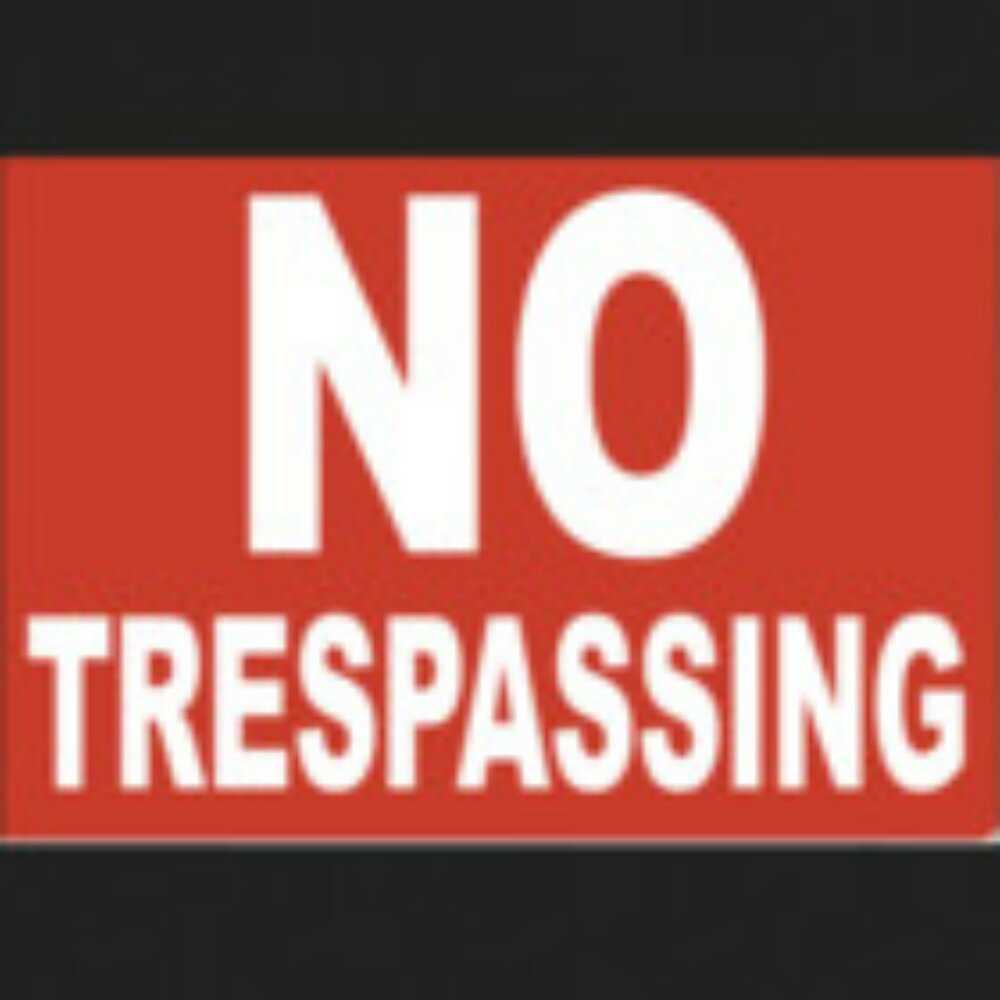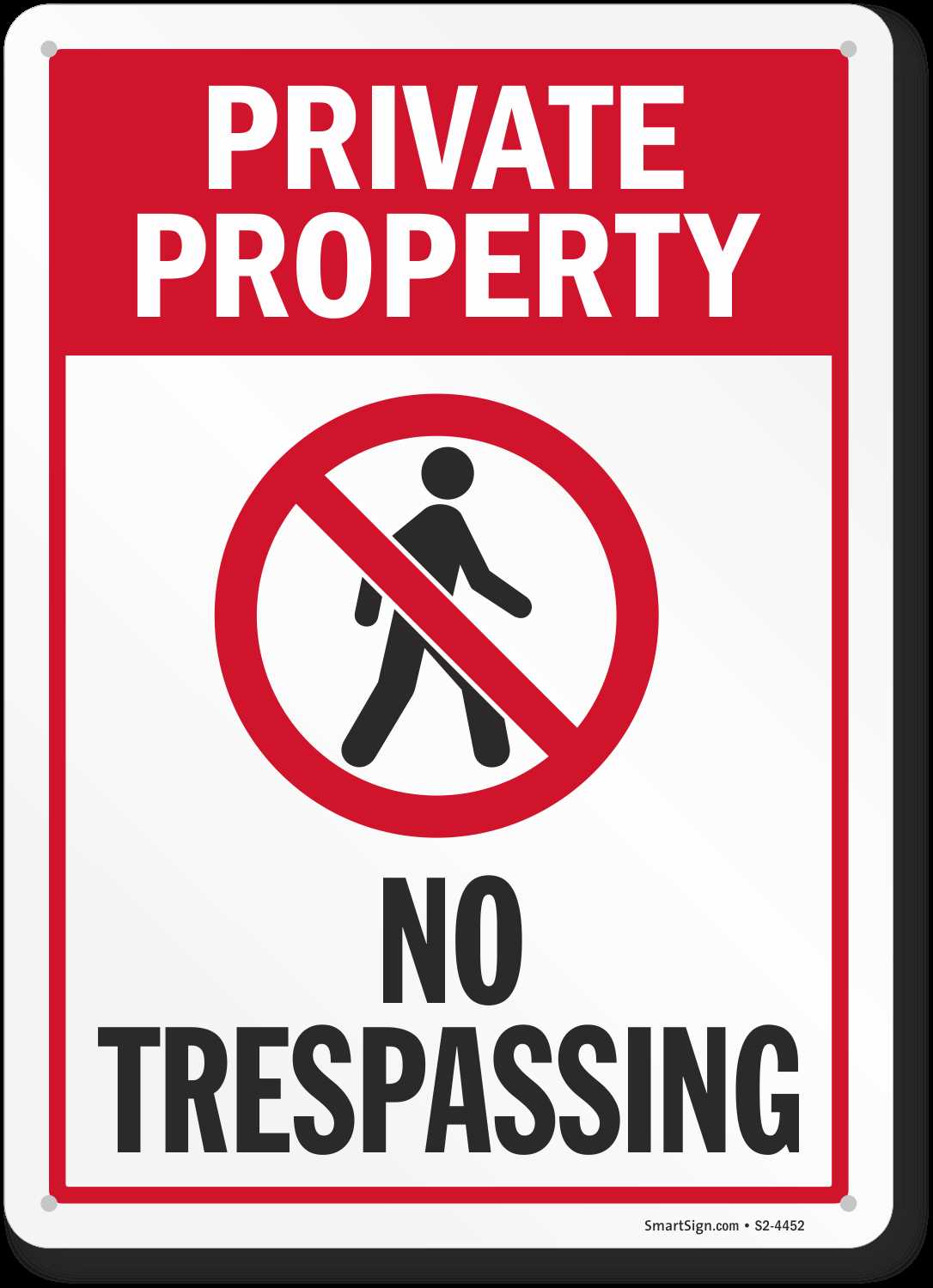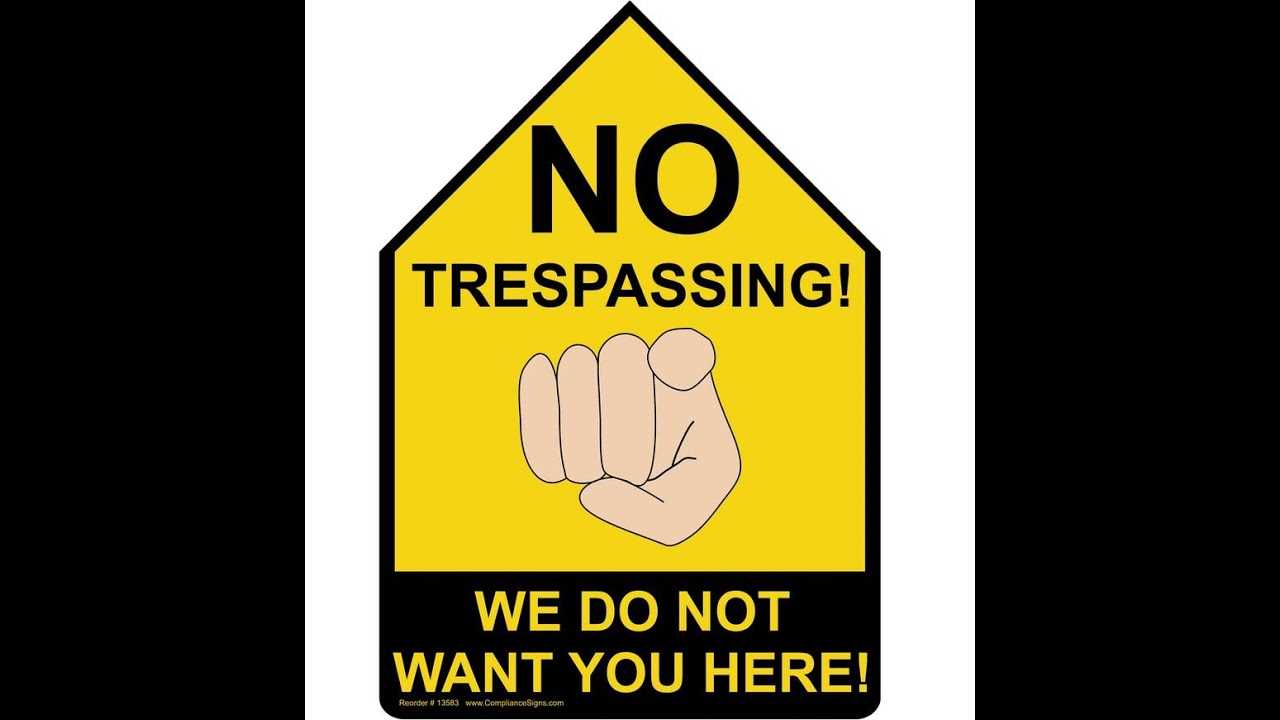No Trespassing Letter Template for Property Protection

Protecting your private property from unauthorized access is an important step in ensuring security and peace of mind. One effective way to communicate this is by issuing a formal document that clearly states entry is prohibited. This approach can help establish boundaries and prevent potential conflicts.
By drafting a straightforward, well-structured notice, you can make your intentions clear to others while maintaining legal integrity. Whether you are dealing with unwanted visitors or ensuring that specific areas remain off-limits, this type of communication serves as a key tool in safeguarding your rights.
Understanding the right way to format such a document is crucial for its success. A professionally written notice not only provides clear instructions but also demonstrates your commitment to enforcing the restrictions if necessary. Proper wording and attention to detail can make a significant difference in its effectiveness.
What is a Property Restriction Notice
A property restriction notice is a formal communication used to inform individuals that they are not allowed to enter or remain on a specific piece of land. This type of document serves as a clear message to prevent unauthorized access and protect the property owner’s rights. It can be issued by landowners, property managers, or legal authorities to outline boundaries and set clear terms for access or behavior on private property.
The goal of such a notice is to assert control over the land and prevent any unwanted interaction. It serves as a warning to individuals who may otherwise unknowingly or deliberately attempt to enter restricted areas. In some cases, this notice may be necessary to ensure safety, maintain privacy, or adhere to legal requirements.
While the content of these notices can vary, the main purpose remains the same: to communicate property restrictions in a clear and legally valid manner. By providing explicit instructions about where entry is prohibited, property owners can avoid misunderstandings and reduce the risk of future conflicts.
How to Draft a Property Access Restriction Notice

Creating a clear and effective property access restriction notice requires attention to detail and understanding of the message you want to convey. The document should be straightforward, legally sound, and precise in communicating that unauthorized entry is not permitted. A well-written restriction notice can help avoid confusion and protect the property owner’s interests.
Start by ensuring the notice includes key elements that are essential for clarity and enforcement. The following table outlines the main components to include in such a document:
| Element | Description |
|---|---|
| Heading | Clearly states that entry is prohibited on the property. |
| Date | The date on which the restriction is effective. |
| Property Information | Specify the location and boundaries of the property in question. |
| Reason for Restriction | Outline why access is restricted, such as for safety or privacy concerns. |
| Consequences | State the potential legal consequences for ignoring the restriction. |
| Signature | Include the signature of the property owner or an authorized representative. |
By following this structure, you ensure that the notice is clear, legally valid, and includes all necessary information to prevent unauthorized access effectively.
Key Details for the Document
When drafting a formal notice to restrict access to a property, certain elements are essential to ensure the document is clear, effective, and legally binding. These key details help convey the necessary information and ensure that the recipient understands the seriousness of the communication. By including the right components, the property owner can set clear boundaries and avoid misunderstandings.
Clarity of Restrictions
The notice should specify exactly what actions are prohibited and the areas affected by the restrictions. It’s important to outline whether the notice applies to all types of entry, including physical access or any form of engagement with the property. By being specific, the document avoids vague language and reduces the risk of misinterpretation.
Legal Consequences
Including information on the potential legal actions that may follow if the restrictions are violated is crucial. The document should outline the steps the property owner may take to enforce the notice, whether it’s through legal action or other measures. This serves as a deterrent and ensures the recipient understands the importance of compliance.
Legal Rights in Property Access Cases
Property owners have specific rights when it comes to controlling who may or may not enter their land. These rights are often protected by law and allow the owner to take necessary steps to ensure that their property remains secure. Understanding these legal rights is essential for properly handling situations where unauthorized entry occurs.
In many jurisdictions, property owners can legally prevent others from entering their land, and they can enforce this right through various means, including formal notices. Additionally, if these rights are violated, the owner may pursue legal actions to address the issue, such as seeking damages or obtaining court orders to prevent further intrusions.
When to Issue a Warning Notice

Issuing a warning notice is an important step in managing property access and ensuring compliance with established boundaries. It is often the first formal action taken when there is a concern about unauthorized entry. Understanding when to issue such a notice can help property owners take appropriate action before resorting to more severe measures.
Common Situations for Issuing a Notice
A warning notice should be issued in the following situations:
- If someone is repeatedly entering the property without permission.
- If there is a risk of harm or damage due to unauthorized access.
- If the owner wants to prevent future conflicts by clearly outlining property boundaries.
Timing and Considerations
It’s crucial to issue the warning notice at the right time to ensure its effectiveness. Here are some key considerations:
- Before taking legal action, ensure the individual is aware of the restrictions.
- Make sure the notice is clear and provides sufficient time for the recipient to comply.
- Consider the severity of the situation and whether a warning is appropriate before escalating the matter.
Issuing a warning notice in a timely manner can help avoid future disputes and establish a clear understanding of the property’s restrictions. It is an essential tool for managing access and protecting the property owner’s rights.
Managing Non-Compliance Effectively
When individuals disregard established boundaries or restrictions, it’s crucial for property owners to manage non-compliance in a clear and effective manner. The goal is to ensure that the individual understands the consequences of their actions and is encouraged to respect the rules moving forward. Effective management involves clear communication, appropriate enforcement, and understanding of legal rights.
To handle non-compliance successfully, property owners should follow a few key steps:
- Document all incidents of unauthorized access to establish a clear record of events.
- Issue follow-up notices that clearly explain the consequences of further violations.
- Be consistent in enforcing boundaries, ensuring the individual knows what is expected.
By addressing non-compliance in a calm and structured way, property owners can prevent escalation and maintain control over their land while protecting their legal rights. The approach should be firm but fair, aiming to resolve the situation without unnecessary conflict.
Differences Between Warnings and Formal Notices
Understanding the distinction between a warning and a formal notice is key for managing property access and addressing violations. While both serve as communication tools to inform individuals of unwanted actions, they differ in their level of seriousness, purpose, and legal weight. Recognizing when to use each can help avoid unnecessary escalation and ensure compliance.
Key Characteristics of Warnings
Warnings are typically the first step in addressing unauthorized actions. They are intended to inform individuals of their behavior and request compliance without involving legal action. Here are the key characteristics:
- Less formal and often less detailed than a formal notice.
- Meant to alert the recipient of a violation and ask for immediate correction.
- Usually issued when the issue is minor or a first offense.
What Makes a Formal Notice Different
A formal notice is a more serious document, often used when previous warnings have been ignored or when the violation is of a more severe nature. It outlines legal consequences and can be used to pursue further action if necessary. Key aspects include:
- Clearly states legal consequences for non-compliance.
- Includes specific deadlines for compliance or further action.
- May be sent via certified mail or other verifiable methods to ensure delivery.
By understanding these differences, property owners can determine the appropriate response to violations and use the right approach to achieve compliance. While warnings are a tool for prevention, formal notices are the step before taking legal action.